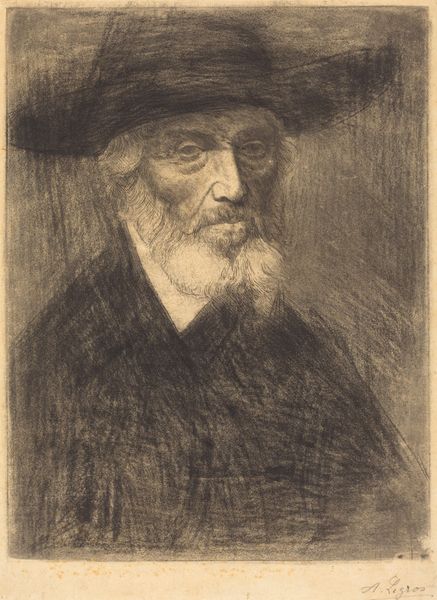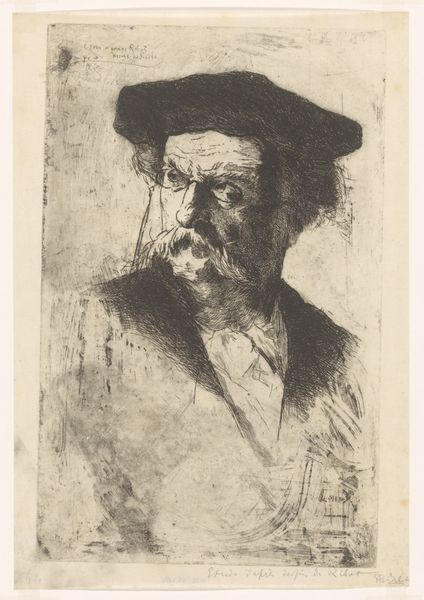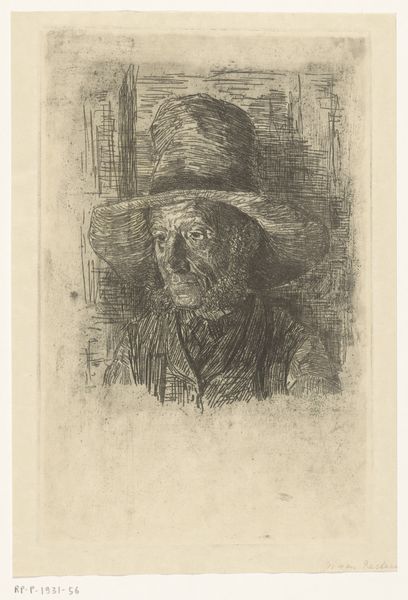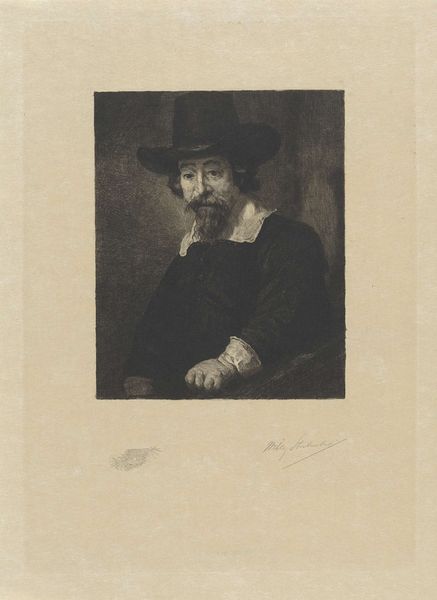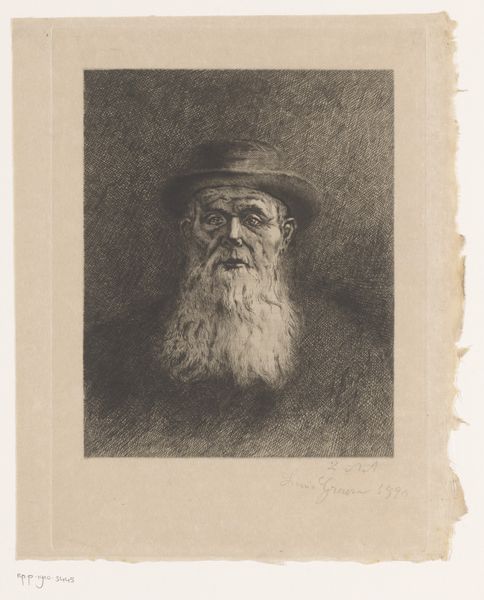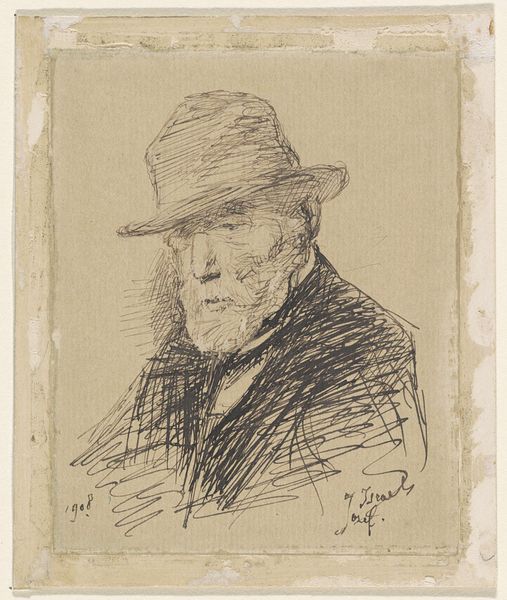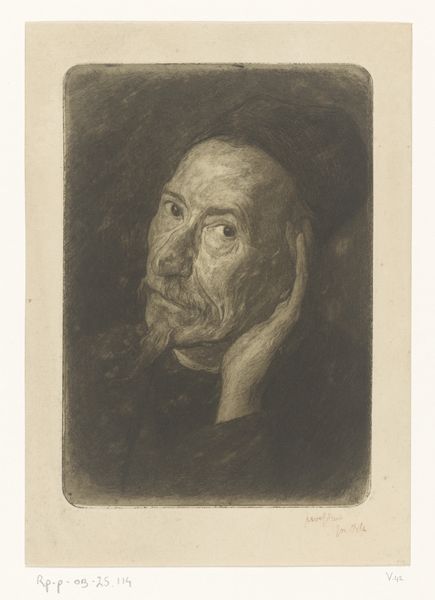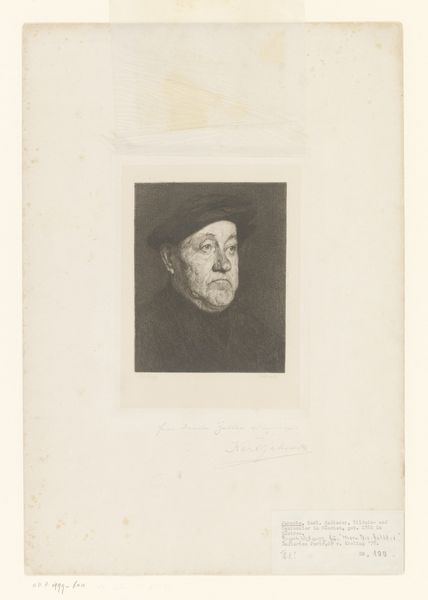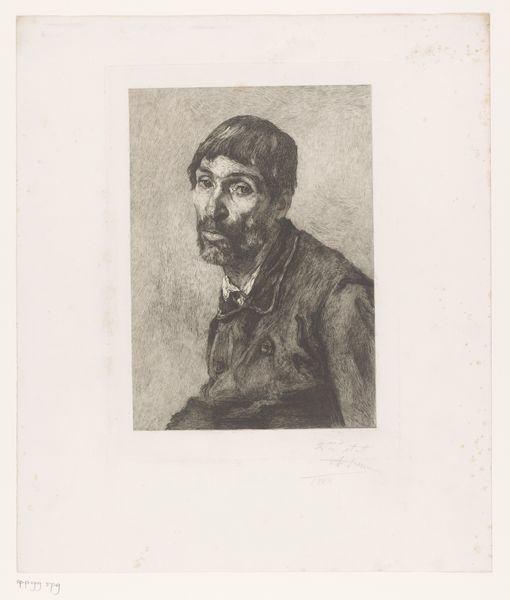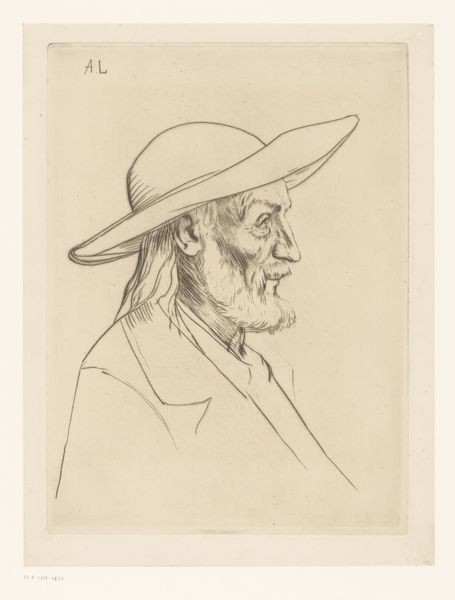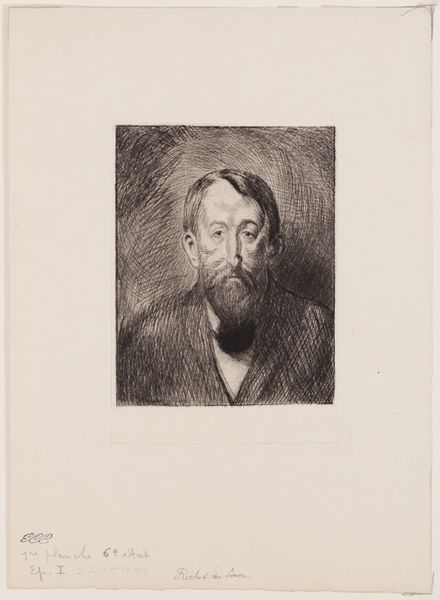
drawing, print, etching, engraving
#
portrait
#
pencil drawn
#
drawing
# print
#
etching
#
pencil sketch
#
charcoal drawing
#
pencil drawing
#
pencil work
#
engraving
Dimensions: height 218 mm, width 151 mm
Copyright: Rijks Museum: Open Domain
Curator: Before us is "Portret van een onbekende man," an etching by Ferdinand Hart Nibbrig, likely created between 1876 and 1888. What's your immediate impression? Editor: Somber. The tight cropping and the subject's downward gaze—there’s an undeniable gravity and almost a weightiness conveyed through the etching's lines. Curator: That sobriety resonates when considering the era. The late 19th century witnessed intense societal shifts. Think about how industrialization reshaped labor and class structures—and how such realities impacted the lives, and thus portraits, of ordinary men. This unnamed individual, rendered in print, prompts us to consider the narratives of countless others largely excluded from mainstream histories. Editor: Indeed. Looking at the texture, I’m struck by how Nibbrig utilizes etching to mimic the qualities of a pencil sketch. The cross-hatching in the background and the face itself appear almost spontaneous, revealing the labor and the skill needed to replicate the effect. Curator: The “sketch-like” quality disrupts traditional notions of portraiture—typically associated with wealth and permanence. Here, the artist employs more accessible means to represent someone unknown, implicitly democratizing the art of portraiture. This opens a dialogue about who deserves to be remembered and represented in art. Editor: Exactly. Etching allowed for wider reproduction, impacting access and consumption of images. We’re compelled to analyze this accessibility against class, gender, race and all other forms of oppression, recognizing whose stories were—and weren't—being disseminated through the mechanical reproduction of prints. Curator: And it begs the question, why this man? Was it a commentary on societal conditions? Was he perhaps symbolic of the working class whose contributions are often forgotten? Without a name, he represents a multitude. Editor: Nibbrig’s method underscores the inherent contradiction in printed portraiture—a democratizing force built upon intensive manual skill, careful labor, and investment in the very materials and means of production. That hat, the man's beard—they both contribute a social identity constructed within very specific material constraints and cultural pressures. Curator: Precisely. Through exploring these prints and materials, and challenging long-held assumptions about identity and artistic value, we recognize whose labor, whose stories have long been deemed unworthy of recognition. Editor: Reflecting on this, the quiet power of this etching comes from the way its materiality opens up these crucial questions, refusing to allow us a passive experience. Curator: A potent reminder to question what’s been framed—and to re-examine those who have been traditionally excluded from the frame, challenging art and power as usual.
Comments
No comments
Be the first to comment and join the conversation on the ultimate creative platform.
